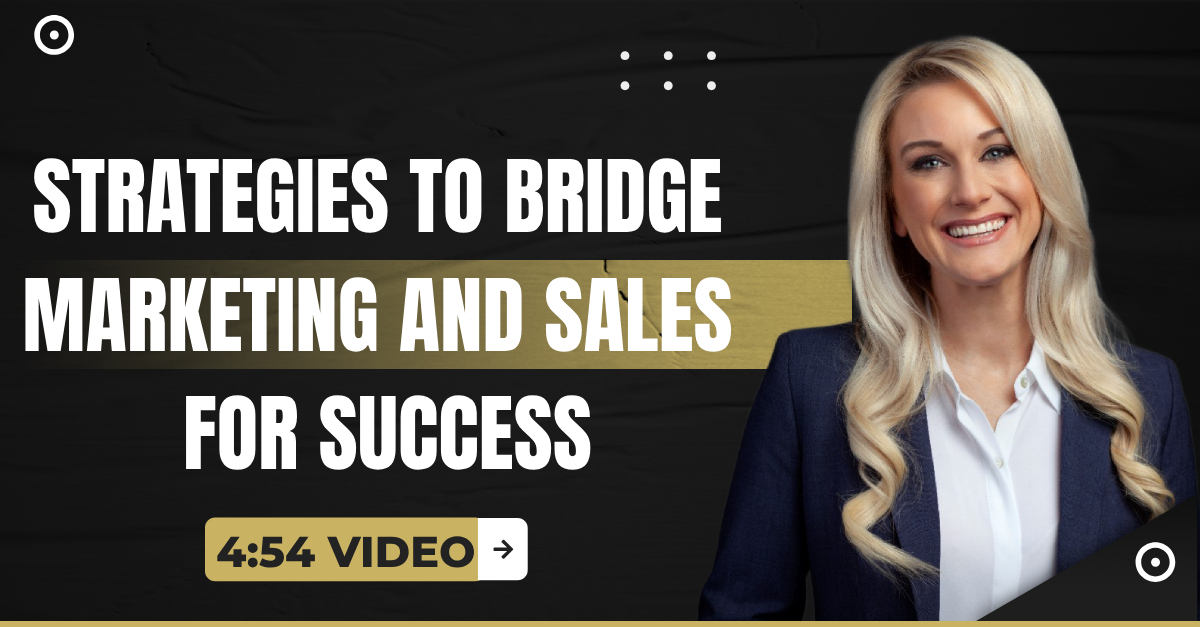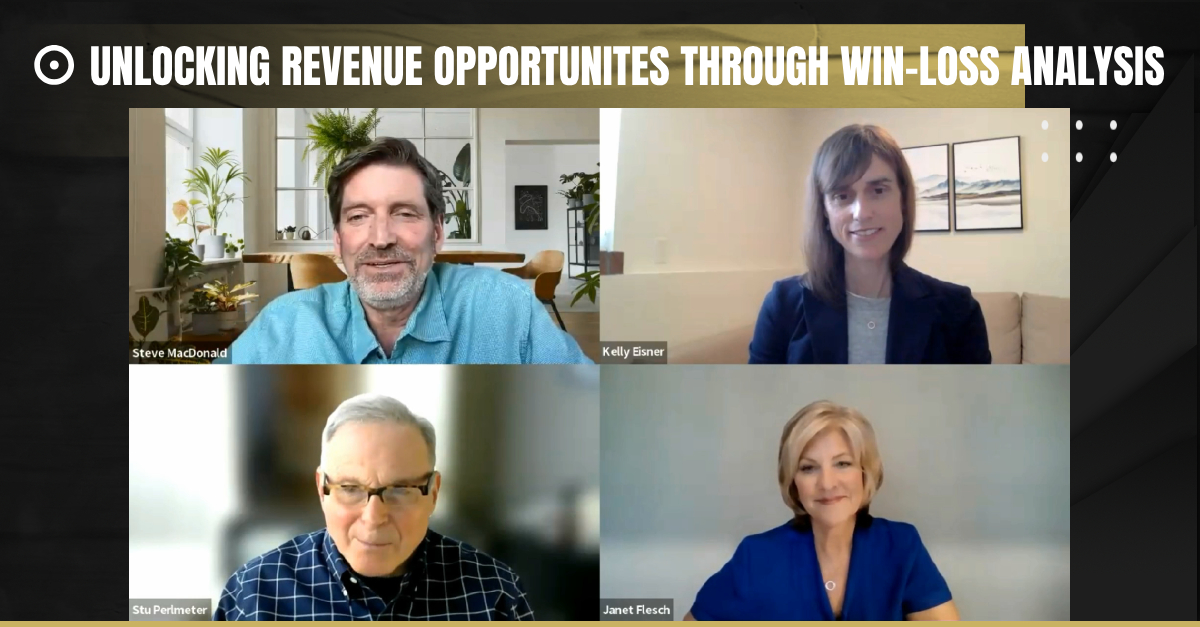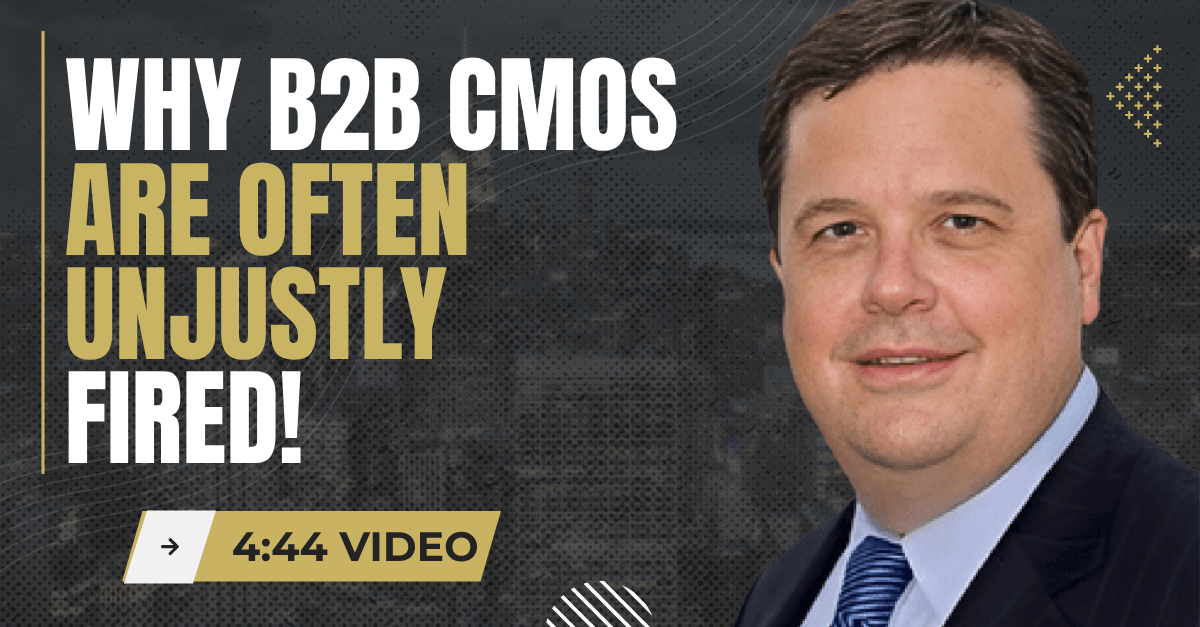(4:48 Video) “CMOs: Reframing the Conversation for Success”
In this video, Jonathan Symonds advocates for thought leadership that educates and challenges norms, shifts B2B buyers’ perspectives, reframes the conversation, and stands out through creative tension and outside validation—without radically changing existing worldviews.

Content Marketing Is Complicated. For B2B sales, we simplify your path to being recognized as industry experts with the highest sales closing rates. As B2B founders, we know how to create content that positions your business as an authority, makes the case for your technology, confronts rational/emotional hurdles, and elevates your salespeople to trusted advisors—your competitive advantage in an ABM sales world. OUR PROMISE is to make your reputation a powerful and effective addition to your company’s core competencies.
In the 4:48 video, two-time CMO Jonathan Symonds discusses the concept of thought leadership and how it can be used to reframe conversations and move buyers from the status quo. He emphasizes the importance of having a nugget of contrarian thinking in thought leadership content and its need to be educational, informative, and defensible.
“There has to be a bridge from here’s where I operate today as a buyer, and here’s where this future state that I want to get to.” – Jonathan Symonds
Jonathan also highlights the significance of creative tension and the role of outside validation from the audience in making thought leadership content stand out. He suggests that thought leadership should aim to change perspectives and offer a different viewpoint without completely transforming the audience’s worldview. Symonds introduces the framework of differentiated, defensible, and translatable content, which helps create effective thought leadership content that changes your buyer’s perspectives, reframes the conversation, and leaves the competition behind.
To learn more, watch the 4:48 video or read the article below.
To catch the full interview with Jonathan on “CMOs: Today’s Blue Ocean for Revenue Marketers,” CLICK HERE.
Article:“CMOs: Reframing the Conversation for Success”
From a podcast interview with 2x B2B CMO, Jonathan Symond
Introduction
In today’s fast-paced and competitive business landscape, thought leadership has become crucial for organizations to differentiate themselves and drive meaningful conversations. But what exactly is thought leadership? How can it be leveraged to reframe the conversation and bring about transformative change? This article will delve into the key elements of thought leadership and explore its potential impact on businesses to ignite meaningful conversations earlier in the buyer’s journey.
The Essence of Thought Leadership
Thought leadership content is not just about presenting information but about challenging the status quo and offering a fresh perspective.
As Jonathan Symonds aptly says, “There’s a nugget of contrarian in it. It’s not oppositional.”
Thought leadership content should be educational, informative, and defensible. It should provide value to the audience while sparking their curiosity and making them think differently.
Reframing the Conversation
To truly make an impact with thought leadership, it is essential to reframe the conversation. This means moving the audience’s perspective and offering them a new way of looking at things.
Jonathan explains, “You’re not trying to radically transform them in a single piece of content. What you are trying to do is get them to think differently.”
By reframing the problem or presenting a differentiated solution, B2B companies can open doors to new possibilities and opportunities.
Differentiation, Defensibility, and Translatability
To effectively reframe the conversation, thought leadership content must possess three key qualities: differentiation, defensibility, and translatability. Differentiation involves presenting a unique perspective or solution that challenges the existing norms. As Jonathan suggests, it could be object storage that’s fast or object storage that can run on a drone. The goal is to get the audience to think about the problem differently.
Defensibility is equally important. Thought leaders must be able to back up their claims with solid evidence.
Jonathan emphasizes the need for ironclad content: “They should be able to repeat what it is that you’ve shown them that they can do now.”
Lastly, translatability refers to making the content accessible to the target audience. While having a wide enough audience is important, it should not be so broad that it loses its relevance.
Jonathan advises, “You want it to be narrow enough that they know it’s for them.”
By striking the right balance, CMOs can ensure their content resonates with the intended audience.
The Power of Peer Validation
One of the most significant factors contributing to the success of thought leadership is peer validation by your ICP. When the audience’s peer community agrees with the first principles presented by the company, it adds credibility and influence to the content. The importance of outside validation comes when your ICP says, ‘I agree with that,’ adding legitimacy to what you say as the seller. By gaining the support and agreement of the target audience’s peers, CMOs can strengthen their position and drive the desired change.
Starting the Journey: Recommendations for CMOs
Jonathan offers valuable recommendations for CMOs looking to embark on the thought leadership journey.
He suggests starting with small but impactful changes in perspective, stating, “By looking at the problem from a different viewpoint, you’ve not changed your worldview much, but you have certainly changed your perspective enough to see things differently than you did previously.”
By gradually introducing new ideas and perspectives, CMOs can pave the way for transformative change.
The Future of Thought Leadership and the Self-Serve Buyer’s Trend
As the B2B landscape evolves, thought leadership will play an increasingly vital role in shaping conversations and driving buyer’s decision-making. By embracing the principles of differentiation, defensibility, and translatability, CMOs can create content that challenges the status quo and inspires change. The power of peer validation and reframing the conversation within the buyer’s journey will continue to be crucial factors in successful go-to-market initiatives.
In conclusion, thought leadership is not just about sharing information; it is about offering a fresh perspective. By presenting differentiated, defensible, and translatable content, thought leaders can capture their audience’s attention and drive meaningful change. As businesses navigate the ever-changing landscape of self-serve buyer preferences, thought leadership will remain a powerful tool for creating conversation earlier in the buyer’s journey.
Tomorrow’s successful CMOs will have truly embraced the power of thought leadership by unlocking its potential to transform how buyers ultimately make their decisions.






